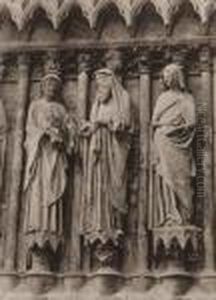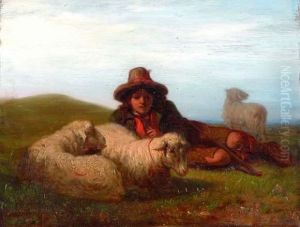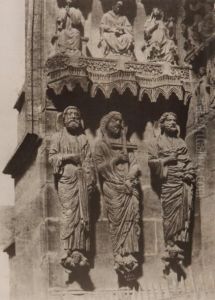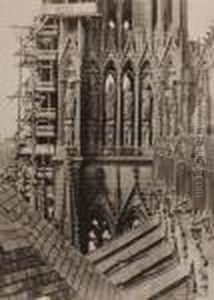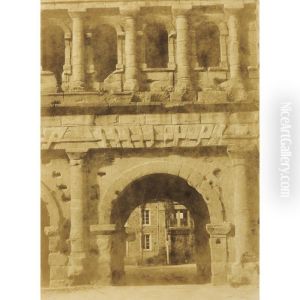Henri Le Secq Paintings
Henri Le Secq was a French painter and photographer, one of the pioneers in the field of photography during the 19th century. Born on August 18, 1818, in Paris, France, Le Secq was initially trained as a painter and sculptor before turning his attention to the burgeoning art of photography. His interest in photography began during the 1840s, a period that saw the medium rapidly evolving with the invention of processes such as the daguerreotype and calotype.
Le Secq was particularly influenced by the daguerreotype process, invented by Louis Daguerre in 1839. He was a member of the Société héliographique, one of the first photographic organizations, and was close friends with several important early photographers, including Gustave Le Gray and Édouard Baldus. In 1851, he participated in the Mission Héliographique, a French government commission that tasked five photographers, including Le Secq, to document historic monuments, architecture, and artworks throughout France. This mission was significant as it was among the earliest attempts to preserve the country's cultural heritage through photography.
During his career, Henri Le Secq produced a vast number of photographs, which included architectural studies, landscapes, and portraits. His work is characterized by a keen sense of composition and light, which he used to dramatic effect, particularly in his architectural photographs. Le Secq also collected photographs and was an early advocate for photography as a form of artistic expression.
His work was well-regarded in his time, and today, Le Secq's photographs are considered important historical documents as well as works of art. They provide insight not only into the early days of photography but also into the 19th-century landscape of France, including many buildings and structures that have since been altered or destroyed.
Henri Le Secq's contribution to photography was cut short by the untimely death of his son, after which he gradually withdrew from photography and returned to his work as a painter and sculptor. He died on December 26, 1882, in Paris. Despite his relatively brief photographic career, Le Secq's legacy endures through his evocative images that continue to be studied and appreciated for their artistry and historical significance. His works are preserved in various institutions and collections around the world, including the Bibliothèque Nationale de France, the Metropolitan Museum of Art in New York, and the Musée d'Orsay in Paris.
